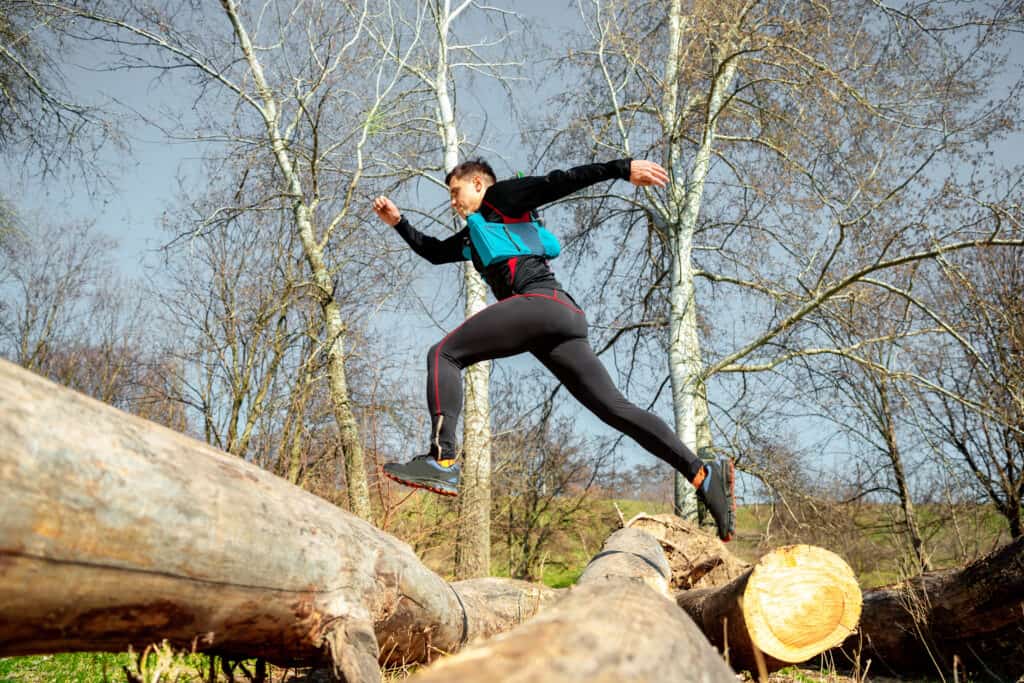There are many different cardio exercises to choose from when thinking about putting together a workout. One of the best overall movements you can add to any routine, though, is rowing. Not with the weights but on the cardio side. There is a reason why every CrossFit box around the country has multiple ergs in their facilities. From whatever stance you want to take, this exercise always comes out on top. Rowing also makes for an efficient warm-up or cool-down. It is also a great pairing option as part of any circuit or interval program.
Muscle Groups Strengthened by Rowing
Rowing is a perfect cardio workout because it engages nine major muscle groups. An hour of moderate-effort rowing can burn up to 400 calories. In addition to rowing offering a very high calorie burn, it also improves work capacity as well as muscle strength and endurance. There are four phases that comprise each rowing stroke. These include the catch, drive, finish and the recovery. According to the English Institute of Sport, a rowing workout recruits about 85 percent of your muscles. Name another exercise that does that?
Any rowing coach will tell you that 70-75 percent of each stroke comes from the hips and legs. The remaining 25-30 percent comes from the arms and upper body. The drive incorporates two parts, (1) the body swing and (2) the arm pull through.
Stair-Climbing Workout
Regular stair-climbing workouts can do wonders for all those who aren’t exactly adrenaline junkies, and who like to keep it simple. If you’re strapped for time, but still want to really challenge your body, all you have to do is put on your sneakers and go to the nearest staircase or better yet, visit a high school or college stadium. It’s effective, affordable, and it only takes half-an-hour or so.
When it comes to caloric expenditure, an average 140-lb person can burn more than 80 calories by running up seven flights of stairs in 5 minutes. The effect is even greater if you wear a weighted vest. Personally, I like walking/running stadium stairs at a nearby high school. Check out running stadium stairs at Harvard University, which I’ve been doing since the late 1980’s, you’ll find out quickly why it’s one of the best outdoor exercises.
Trail Running
No workout list is complete without some form of running. It is a great idea, at times, to change your urban scenery for a more beautiful natural, outdoor setting and enjoy some fresh air. Many people find track running boring and monotonous, and trail running can provide them with much-needed excitement. It is a great outdoor exercise too. Due to the uneven terrain, you’ll have to adjust your pace and put even more effort into covering steep slopes. All this will result in a 10 percent increase in your calorie burn, not to mention that this type of cardio puts less strain on your joints and bones compared to running on the sidewalk or street.

Stand Up Paddleboard (SUP)
Stand Up Paddleboard (SUP) is one of the best core and upper body exercises you can do. It is also really fun to do, improves balance, and of course, gets you outdoors more. There has been a great deal of research on the benefits of SUP done at Bond University in Australia. In one such study, a 2016 publication in BMC Sports Science, Medicine and Rehabilitation, Schram and colleagues showed improvements in aerobic and anaerobic capacity after only 4-weeks of SUP training. Strength increases were also seen in the core and back. Read about the full study here. It may not work 85 percent of the muscle like rowing does but it still strengthens 13 different muscle groups. These include:
Lungs (diaphragm)
Heart
Quadriceps
Hamstrings
Feet
Rhomboid
Latissimus dorsi
Trapezius
Shoulders
Triceps
Biceps
Rotator cuff
Core
One area that ends up getting a lot of work during SUP are your feet. There are 29 different foot muscles that get used balancing on a SUP. In addition, many intrinsic and extrinsic muscles that make up your lower leg and ankle are called into play. An hour of SUP can expend about 600-700 calories.
Stay Fit Kayaking
Kayak is a great mind/body activity to do. Here are just a few of the many health benefits you get from kayaking.
Improved cardiovascular fitness.
Increased muscle strength (in the back, arms, shoulders and chest).
Core strength is increased.
Improves mood by reducing anxiety and stress levels.
The strength to power a kayak comes mainly from rotating the torso and applying pressure with your legs. The calories expended in kayaking can reach 400 to 500 calories an hour paddling an average of 5 mph. Did you know it takes about 500 strokes to paddle a mile in a kayak? Each of the exercises mentioned, are a form of aerobic (and in some cases anaerobic) exercise which is great for reducing stress. Aerobic exercise, according to Harvard Health, triggers the release of brain chemicals that can quickly improve your mood. All three utilize large muscle groups and are rhythmic in nature which is basically the definition for aerobic exercise.
Jumping Rope
Jumping rope is one of the best exercises you can do. It can be done anywhere but it really is a great outdoor activity. Either way, it burns maximum calories in minimal time. Jumping rope makes a great warm-up before strength training. It also conditions your cardiovascular system and in turn strengthens your wrists shoulders and ankles. One of the great by-products of jumping rope is it increases speed and power. In a recent meta-analysis of 21 studies, published in the Journal of Sports Sciences, jump rope training was linked to faster running times. One possible reason for could be because when you jump rope, your feet are striking the ground for shorter periods of time similar to running.
When talking calorie expenditure, jumping rope burns about 75 to 100 calories per 500 jumps. Other research has shown 10-minutes of continuous rope jumping is equivalent to running an 8-minute mile. Here is an easy-to-use calculator to determine your calorie expenditure when jumping rope.
Final Thoughts
These exercises are fun to do and you get a lot of bang for your buck if they are done regularly. Among other things, they burn a ton of calories, build strong bones, increase strength and will improve your overall fitness level. Adding a few of these activities into your weekend plans, coupled with your weekly Jefit strength training sessions make a great combination. Give one or all a try, and who knows, maybe you’ll end up in a SUP race!
Stay Strong Together
Jefit, named best strength training app by Sports Illustrated, Esquire, GQ, Men’s Health, Greatest, Forbes Health, and many others. We offer a community responsible for 92,000,000 workouts to date! The app, which recently passed 10 million downloads, comes equipped with a customizable workout planner and training log. The app also has ability to track data, offer audio coaching cues, and can share workouts with friends. Visit our members-only Facebook group. Connect with like-minded people, share tips, and advice to help get closer to reaching your fitness goals.
Read the scientific paper published in the Journal of Medical Internet Research using the Jefit app. Also, a great Jefit app review was recently published by MUO that can be found here.
- Top Hip & Back Extension Exercises for Posterior Chain Power - April 23, 2025
- Best Exercises to Build Strong & Defined Shoulder Muscles - April 21, 2025
- Whey vs. Casein: What’s the Best Protein for Building Muscle - April 18, 2025
